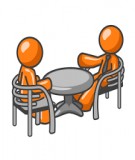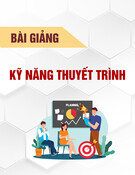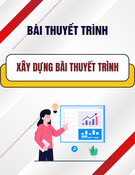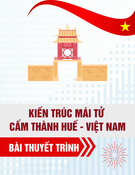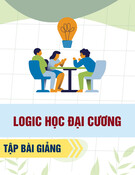Initiative Leadership – Overall Skills assessment Preparing for Success
Fundamental–all must have successfully led an initiative before reaching this level. The ‘apprentice’ initiative managers have had assignments and training that prepare them for their first initiative. Typically, these first initiatives will be Tier III, cost saving and Marketing only initiatives and are mostly Band II people. Their immediate Supervisor ascertains whether they are having the required knowledge and skill to lead an initiative.
Fundamental Advanced Expert
Tier I & II
Initiative (types) to Qualified/ Certified on 1. Leadership, Successfully led a Tier I or II initiative Tier I Major Business Unit Initiatives Successfully leads major Business Unit initiatives
2. Accountability & Direction Setting Initiative management systems Tier III, Cost Savings, Marketing Initiative Successfully led small initiative or project: Delivered business objectives Fundamental knowledge & practice of tools & skills sets Same + improves methodologies and tools.
3. Team Operations Same + Coaches and teaches others. Successfully demonstrates can manage a multifunctional team.
4. Business Knowledge Same + has influenced business direction
5. Functional Knowledge
Same + influences design and application of new or best tools.
Qualification/Certification allows leading Uses basic level knowledge with team to achieve desired results. Meets multifunctional knowledge requirements and successfully integrates their needs into the project. Tier I & II 1 or 2/year in each Category/Region
Major Corporate/ Enterprise program Major business restructuring. 2 – 4/year as a company Applies to larger initiatives. Finds ways to improve systems Same + more people, interfaces, both internally and externally over a longer time Same + apply broader knowledge to influence & achieve greater results Same + optimizes use and application of function methods in their initiative. Major Business Unit initiative. New Platform Global Initiative New Brand/CNV 1 or 2/year in each business unit
Total Investment Examples Olean, Swiffer, Stages, Febreze, Actonel <$ MM Larger Flankers & Line Extensions Torengos >$ MM Clairol Acquisition, Flashpoint GBS ‘sale’
Typical Band III and IV, some II’s III, IV & V same
Pre Requisites Knowledge Skills Training Assessment Fundamental Skills & Knowledge Applied Advanced Skills & Knowledge Applied Expert Skills & Knowledge Applied
Page 1
10/9/2015
Mike Mills init_ldr_mastery_matrix_r_5a_2_18_03_1164.doc
Fundamental Qualification Advanced Certification Expert Certification
1. Leadership, Accountability & Direction Setting
Prerequisites before leading any project: (cid:0) Knowledge: 3E’s (Envision, Energize, Engage), SDDS, Horizontal Management, basic communication tools (email, Same time, team space, NetMeeting, MS Office, etc.) (cid:0) (cid:0) (cid:0) Skills – Business Writing (commercial form) and Presentations, Use of communication tools Training – Team Leader Training and Methodology Boot Camp Assessment – Supervisor believes they can handle the tasks
Fundamental Advanced Expert Knowledge or Skill Area (SIL Principle #) 1:1 Setting Direction: (cid:0) Same + on Tier I or II initiative Have successfully demonstrated use of all these. Led team to do this (cid:0) (cid:0) Same + Successfully led major business unit initiative. Found ways to improve our methods and practices Establishing Criteria/Measures (#1 & 2) Chartering Identify Issues & Assumptions Manage Option Development
1:2 Change Management (#4) Same as above Same as above Same
1:3 Barrier Breaking & Alignment: (cid:0) W/Functions (with #6) (cid:0) Same + Also works outside of B/U Same + With Senior Management Demonstrates all on an initiative within a business unit with some help by Sponsor Across function (with #6) (cid:0) With Management & Business leaders
Same+ as above Same + as above (cid:0) Demonstrated on an initiative (cid:0) 1:4 Accountability & Communication Knowing what is happening (#11) Telling people what is happening (#12)
Page 2
10/9/2015
Mike Mills init_ldr_mastery_matrix_r_5a_2_18_03_1164.doc
1:5 Delivering Results Same (cid:0) Same + achieves greater results Delivered against Decision Criteria or took action to ‘kill’ project (cid:0) Taking Action & Following Through (#13) Review end results (#14)
2. Initiative Management Systems (Irv’s Team, SIMPL owners & current project managers)
Prerequisites before leading any project: (cid:0) Knowledge : Cost & Budget Management basic systems, Risk Management Tools. SIMPL (cid:0) Skills – Put a real plan and schedule together. Demonstrated problem solving and use of risk management tools (cid:0) – Planning & scheduling training (or integrated into ‘boot camp’) + Team Leader Training and Methodology Training Boot Camp (cid:0) Assessment – Supervisor based on on the job performance
Fundamental Advanced Expert Knowledge or Skill Area (SIL Principle #) 2:1 Planning & Scheduling (#2 & 3) (cid:0) (cid:0) Same + Applied to tier I & II projects. Qualified expeditor Same + Applied to major business unit initiative or program (cid:0) (cid:0) Plan development and agreement Program/project execution & milestone schedule Tracking & Control Accelerator
Working knowledge of scheduling tools & software Leads team to identify issues/assumptions, tasks, responsibilities and converge on a plan and associate execution & milestone schedule Assess progress & recommend corrections.
2:2 Risk Assessment & Management (#5) Same + Manages risk with the business unit leadership Same + Manages risk with company leaders
Same (cid:0) (cid:0) Proactively identifies and manages financial and franchise risks. Develops plans to address Thorough understanding and demonstrated proper use of all elements. Achieved business results. Uses to achieve improved results. Finds ways to improve the process (cid:0) (cid:0) (cid:0) 2:3 SIMPL (#6& 7) Principles Phases & Milestones Success Criteria Readiness Tools 2:4 Problem Solving/Decision Making Understands and Same
successfully uses tools (Add skill description) Successfully demonstrated on major initiative
Same 2:5 Cost & Budget Management including Cost & Feasibilities Applies basic cost management systems and proactively manages
2:6 Use of the Diamond Understand concepts Same
Familiar with
2:7 SDDS (Strategy Development and Deployment) 2:8 Portfolio Analysis Same + Managed an OGSM Same
Page 3
10/9/2015
Mike Mills init_ldr_mastery_matrix_r_5a_2_18_03_1164.doc
Proactively develops and implements control and reduction options. Manages initiatives with substantial investment Proactively gains alignment on Portfolio and Master Plan at SIMPL milestones – insuring initiative fits with BU strategy and priorities. Is potential Diamond Owner Have developed an OGSM Improved accuracy based upon better understanding of risks and probabilities. Understands process and provides accurate input data for decisions and priorities
Page 4
10/9/2015
Mike Mills init_ldr_mastery_matrix_r_5a_2_18_03_1164.doc
Same Same 2:9 Master Plan Brand Building Framework? Understands concept and demonstrated capability to deliver.
3. Team Operations
Fundamental Advanced Expert Knowledge or Skill Area (SIL Principle #)
(cid:0) Brings top company performers to team (cid:0) Achieves results with assigned people Identifies and fills gaps Replaces problem staff Proactively staff initiative and optimizes Reaches broadly across company (cid:0) (cid:0) 3:1 Staffing (#8 & 9): Articulating needs Developing role descriptions Interviewing & assessment, Effective Negotiations
(cid:0) Uses team to deliver results (cid:0) Same + leads teams which include senior management Successfully crafts an effective team across complex environments & geographies (cid:0) (cid:0) 3:2 Team Development (#10) Creating Effective Teams Collaboration Effective Meetings Facilitation skill
(cid:0) (cid:0) Everyone does their work and meets expectations Identifies problems and brings in help Same + Many people on team have succeeded as leaders in the company (cid:0) Same + Considered Role Model Stretches people. Feedback that this was a growthful assignment (cid:0) 3:3 People Development (#10) OnBoarding & Joinup Sharing expectations Coaching & Training Inclusion/diversity
3:4 Ongoing Improvement (#10) Same (cid:0) (cid:0) Ongoing assessment Provides feedback to functional leaders (cid:0) Assessments Feedback Rewards & recognition Same + Ongoing feedback to individuals Rewards & Recognizes team & Individuals
3:5 Delegation Skills Same Successfully leads multifunctional team
3:6 Time Management Same Training and applies to self and Team
Page 5
10/9/2015
Mike Mills init_ldr_mastery_matrix_r_5a_2_18_03_1164.doc
3:7 Conflict Resolutions Trained & Demonstrates results with team Same + Corporate Leaders Successfully leads multifunctional team with multiple levels Same+ Across complex interfaces Same + Demonstrates results with Business Unit
4. Business Knowledge
Knowledge or Skill Area Fundamental Advanced Expert
Same 4:1 Company & Business Unit Strategy & Direction Can articulate and describe their project’s relationship
Can clearly articulate Same 4:2 Company & Business Unit structure and key managers
Same Can clearly articulate each of the following. (cid:0) (cid:0) Able to propose option to drive improved business results. Can freely discuss these with management Same + Can assess strengths and weaknesses to develop stronger teams and plans – with better results Same + Able to propose options that can improve the initiative and business results (cid:0) Can relate each to the objective of their initiative (cid:0) (cid:0) (cid:0) (cid:0) (cid:0)
(cid:0) (cid:0) (cid:0) (cid:0) (cid:0) (cid:0) (cid:0) 4:3 Business Background, capability & Assessment: History Products & Packages Strengths (cid:0) Weaknesses Opportunities Threats Competition Initiative Success Principles Brand Equity (using Brand Building Framework) Initiative Portfolio & Masterplan Sites & Facilities Budgets Technologies Forecasting Different Business Models Holistic Innovation
4:4 Customer & Consumer (need to define)
Working knowledge
Page 6
10/9/2015
Mike Mills init_ldr_mastery_matrix_r_5a_2_18_03_1164.doc
4:5 Applicable Policy, Procedures, Standards and Government Regulations. Increased ability to spot potential issues earlier & with less consequences
5. Functional Knowledge & Skill
Knowledge or Skill Area
Fundamental Advanced Expert (cid:0)
5:1 Advertising – Basic Knowledge
Same +
(cid:0) (cid:0)
(cid:0) (cid:0) (cid:0)
(cid:0) (cid:0)
Successfully run a Test Market & National/Global Launch Broadening assignment in marketing or substantial marketing experience
Key Marketing Processes: Concept, copy, package, media sampling, marketing plan development, commercial readiness, commercial readiness Fundamentals/key tools: Marketing Framework, Brand building scorecard, Equity Pyramid Qualification: methods, options, diagnosis, analysis
Actual experience with key Marketing Fundamentals, Processes & Qualification Thorough understanding of factors and measures that drive commercial success. Ability to apply this knowledge to an action plan that maximizes NOS/NPV
(cid:0)
5:2 R&D: Basic Knowledge
Same +
Same +
(cid:0) (cid:0) (cid:0) (cid:0)
Understands reason for each process and tool. Able to know if they are being used
(cid:0) (cid:0)
(cid:0)
Ability to assess whether the organization has the capability to deliver the most significant initiatives
(cid:0)
Key Technical Processes: MOPD, Package Design, DEPTH Model, Technical Readiness Key Support processes PS&RA, CSS/QA C&D Technology
Processes and tools used at the right time and “masterfully”. Assesses if team members are sufficiently skilled in use and application to specific initiative need.
(cid:0)
Same +
(cid:0)
5:3 Product Supply: Basic Knowledge/awareness of
(cid:0) (cid:0)
(cid:0) (cid:0)
(cid:0) (cid:0) (cid:0)
Funding mechanics (e.g., supplier advance vs. capital) Integrated Business Planning/Demand Planning tools including Capacity Planning & CPS Technical Readiness: TT&T/CQV Sourcing
(cid:0)
(cid:0)
Working knowledge of Critical Chain and how to use buffers Quantify key qualification for specific project and how to manage Nuances of forecasting and the needs for buffers Understand Strategy Engagement Tool and how to apply
(cid:0)
(cid:0)
(cid:0)
5:4 CMK – basic knowledge:
Same +
(cid:0) (cid:0)
(cid:0) (cid:0) (cid:0)
Initiative Success drivers and associated CMK tools. Learning plans and key milestones. Inmarket tracking measures
Can listen to consumers and translate these into creative ideas leading to new projects.
(cid:0)
(cid:0)
Has successfully managed a schedule Understands Technical Readiness concepts and the multiple qualifications. Has integrated into an overall development plan. Capacity Planning – understands Capacity to Demand ratios (C/D) and what they imply for launching and going Sourcing – understands trade\offs vs. the project success criteria with mgt. Risk profile Understands customization capabilities for launch and going Indepth understanding of IS drivers and working knowledge of CMK tools. Ability to interpret Copy/ARS test results & understand key drivers Ability to influence learning plan to drive greater success Ability to track in market progress and
Page 7
10/9/2015
Mike Mills init_ldr_mastery_matrix_r_5a_2_18_03_1164.doc
initiate actions to improve results
Page 8
10/9/2015
Mike Mills init_ldr_mastery_matrix_r_5a_2_18_03_1164.doc
Functional Knowledge & Skill (Cont’d)
Knowledge or Skill Area
Fundamental Advanced Expert (cid:0)
Same +
Same +
(cid:0) (cid:0) (cid:0) (cid:0) (cid:0)
Participated in new initiative sales presentation at a key customer.
(cid:0) (cid:0) (cid:0) (cid:0)
5:5 MDO: Basic Knowledge Customer Selling Trade dynamics MDO Operations including GBP MOTs Teams CBD Structure
(cid:0)
(cid:0) Understands basic MDO market deployment process and customer leadtime requirements.
Understands retailers’ capability to influence consumer purchase decisions Ability to effectively allocate MSA between customer and consumer spending
Understands customer market leaders retail consolidation Understands CBD multifunctional team structure/capability Full Sales training or substantial Sales experience
5:6 F&A – Basic Knowledge:
TBD
TBD
(cid:0) (cid:0)
Indepth understanding of key variables that drive NPV on a specific initiative.
(cid:0) (cid:0)
C&F’s Cash Flow analysis including NPV/TSR Financial Risk Analysis Funding mechanics
Ability to apply these drivers to an action plan/learning plan that maximizes the financial return.
(cid:0)
Same +
Same +
(cid:0) (cid:0) (cid:0)
Ability
(cid:0) (cid:0) (cid:0)
Understands reason for each process and tool. Able to know if they are being used
(cid:0) (cid:0) (cid:0)
to assess whether the organization has the capability to deliver the most significant initiatives
(cid:0)
5:7 Design: Awareness if: Equity guidelines Project tiering Design Principles Equity choice wheel Design Briefs Design Manager Network
Processes and tools used at the right time and “masterfully”. Assesses if team members are sufficiently skilled in use and application to specific initiative need.
(cid:0)
5.75 Artwork (Jay Cramer) 5:8 Fast Cycle Learning
Same +
Same +
(cid:0) (cid:0) (cid:0)
Ability
(cid:0) (cid:0) (cid:0)
Understands reason for each process and tool. Able to know if they are being used
(cid:0) (cid:0) (cid:0)
to assess whether the organization has the capability to deliver the most significant initiatives
(cid:0)
Internet enabled consumer research Rapid physical Prototypes Computer aided Engineering Virtual Test Marketing Accelerator (see 2:1) JEDI: Team Based Prototyping
(cid:0)
Processes and tools used at the right time and “masterfully”. Assesses if team members are sufficiently skilled in use and application to specific initiative need. Use capabilities in an integrated way to maximize their contribution to the initiative results.
5:9 External Relations (Molly Humbard – 37647)
Page 9
10/9/2015
Mike Mills init_ldr_mastery_matrix_r_5a_2_18_03_1164.doc
The Art of Successful Initiative Leadership
Appoint the project leadership. a) Hold Project Leadership accountable (especially “Sponsors”) for both in-market results and
the performance of the project team.
1
8
b) Build capable Initiative Leaders – Proficiency, Authority, Experience, Time (rule of thumb:
leadership activities take 6-8% of total project effort).
c) Appoint “lieutenants” and sub-team leaders. d) Resist functional decision-making.
Clearly define the initiative’s commercial objectives and keep these in front of the team at all times. a) Articulate the commercial purpose of the initiative precisely, in a single sentence. b) Flesh out the project goal by setting clear and comprehensive Success Criteria. c) Agree the objectives with business leadership. d) Keep the project objectives in front of the team at all times. e) Treat changes to the objectives as a major event.
Define a plan to achieve the project objectives. a) Develop a complete picture of the project scope that will be required to deliver the goal;
Appoint the multifunctional project team. a) Assign a focused task force. b) Expand the responsibilities of the core members of the project team as much as
make design choices that maximize the chances of success.
2
9
c)
practicable. Involve all the right people, early enough for them to influence the project design (functional expertise and detailed market knowledge).
d) Hold Project Team members accountable to the Initiative Leader (rather than to their
functional home).
b) Consider different scenarios when creating the Base Plan. c) Maintain a project Base Plan as the single source of agreed project scope. d) Use consumer testing to guide the design process. e) Validate that the defined plan will deliver the goal. f) Execute the plan upon which the initiative was committed.
e) Maximize co-location of team members. Use virtual teaming tools where impractical.
3
10
Lead the project team. a) Build and nurture relationships within the team (“Team Building”). b) Hold regular team meetings. Keep the project team informed. c) Manage to the strengths and weaknesses of both individuals and the team as a whole.
Define a plan to deliver the initiative. a) List the tasks to be performed and determine the project schedule. b) Obtain the staffing required. c) Obtain the funding required. d) Plan at the appropriate level of detail (broad milestone planning for total project; detailed
Spend time and effort on the vulnerable areas.
planning for next/current stage).
Follow a disciplined change management process. a) Evaluate changes to the initiative plan thoroughly, before changing the plan. b) Recognize that major changes to scope, without a corresponding increase in either timing
4
1 1
or resources, will simply compromise the results delivered in-market.
c) Define those changes that are within the project team’s control and those that require
management involvement and approval.
Know what’s happening. a) Run the project on a doctrine of “no surprises.” b) Regularly review the status of tasks due. c) Monitor team performance and morale. d) Watch vulnerable areas closely. e) Adjust the plan as necessary.
Establish sufficient flexibility and contingency in the initiative plan. a) Manage expectations. Make realistic commitments. Refuse the imposition of unrealistic
targets – they create recklessness.
Tell people what’s happening. a)
Issue status reports. Keep them succinct and to the point (i.e., is the project on track to deliver its objectives?).
5
12
b) Establish a reserve (contingency). Frequently in schedule, but can be in any of the 4 plan
variables (scope, timing, resources, or results).
c) Foresee potential significant difficulties that could arise and make backup plans to deal with
b) High problem areas and risks, c) Distribute initiative information broadly.
these (versus advocacy, i.e., arguing that they are not serious risks).
Use project decision milestones (SIMPL) to maximize chances of commercial success. a) Project Establishment: Start the project only when there is a right to succeed (screened for
viability).
b) Project Commitment: Start implementation only when you have confidence that the
Follow through until results are achieved. a) Monitor post-launch results (commercial and technical). Continue to plan and readjust
6
business model is sound.
1 3
accordingly.
c) Launch Plan Agreement/Launch Authorization: Proceed to launch only when the initiative
d) Maintain accountability until the results are delivered.
plan is complete and you are sure that you will deliver.
d) Results Review: Close the project and hand over to the ongoing operation only when
satisfied that all of the project work is complete.
7
1 4
Identify issues/challenges to address, and resources required to succeed, in next phase.
Review the end results of the project to be sure whether or not it’s a success. a) Compare in-market results with project objectives. b) Capture and document learnings. Reapply to subsequent launches and other projects. c) Understand the capability of the initiative process (success rates, lead time, resources).
Prepare project decisions thoroughly. a) Plan ahead (discuss next month’s decisions while making this month’s decisions). b) Get broad input and alignment to the plan. c) e) Plan for the availability of the decision makers.
Page 10
10/9/2015
Mike Mills init_ldr_mastery_matrix_r_5a_2_18_03_1164.doc



